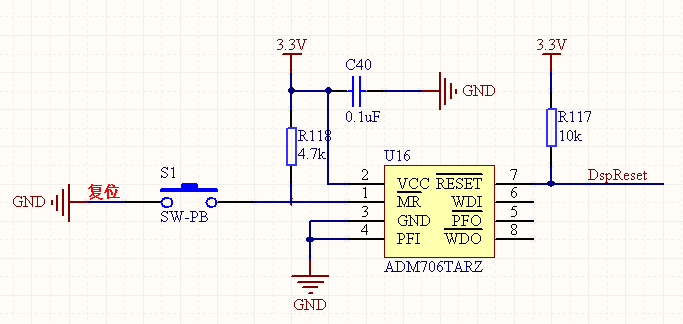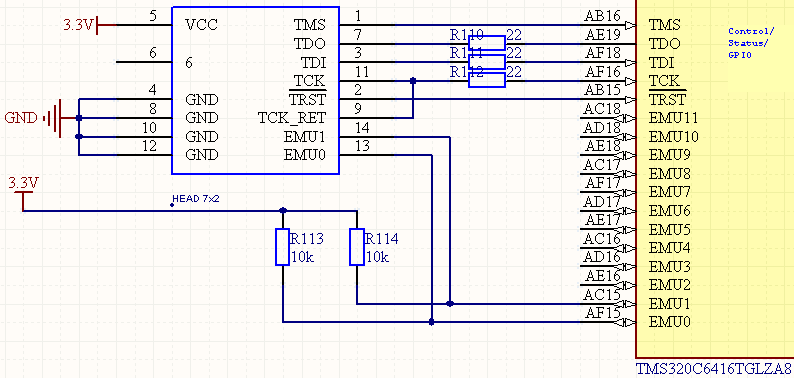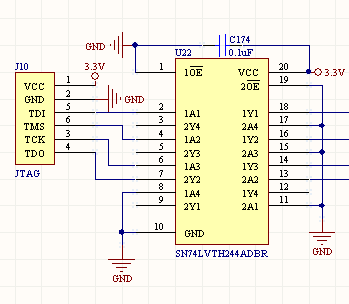Wu Jianying Microcontroller Development Board Address
Shop:【Wu Jianying’s Shop】
Address:【https://item.taobao.com/item.htm?_u=ukgdp5a7629&id=524088004171】
This article contains two parts: 1) Continuing the discussion on the TI DSP connection issues; 2) Briefly mentioning the Xilinx FPGA JTAG connection issues.
1. Why Can’t the TI DSP Connect?
Half a year ago, I published a blog post titled “Why Can’t the DSP Connect? TMS320C6416T + seed-XDS510 PLUS” which explained various reasons for DSP connection failures. The TI DSP performs excellently, but connection issues are a significant problem that has been bothering me recently. After a long period of troubleshooting, I finally resolved the issue. Perhaps the root cause of the problem was not what many online users faced. I want to emphasize one thing: If your DSP system cannot connect at all, there must be a hardware issue. In addition to checking one by one according to the blog post “Why Can’t the DSP Connect? TMS320C6416T + seed-XDS510 PLUS”, be sure to pay attention to your reset circuit, and I cannot stress this enough!
This time, I struggled for a long time with the DSP connection issue. In CCS, the Debug—Reset Emulator function can be executed (if this doesn’t work, it might be a driver issue or simply not connected, etc.).
First, let me show my reset circuit:

As shown in the figure, the reset circuit uses an ADM706TARZ chip.
Two weeks ago, I found that the DSP could not connect at all. Later, I measured the switch S1, and found that the two ends were not connected when the switch was pressed. I then replaced the switch, and the DSP was able to connect.
However, it couldn’t connect again. What was going on? I measured each pin of the DSP’s JTAG interface, and they were all normal. After powering on, I measured each pin again, and they were still normal. Here are the voltage values for each pin for reference:
TMS—3.05V; TRST—0V; TDI—3.04V; TDO—3.16V; TCK_RET—3.03V; TCK—3.03V; EMU1—3.27V; EMU2—3.27V; VCC—3.28V; GND—0V;
I used a multimeter in DC mode for testing because I didn’t have an oscilloscope at hand at that moment. The DSP JTAG connection is shown in the figure below:

Everything seemed normal, so why couldn’t it connect? I measured the switch multiple times, and there were no issues like before. The most frustrating part was that sometimes it could connect, and sometimes it couldn’t, leaving me feeling a bit helpless…
Finally, I discovered that sometimes pressing the reset button a few times would allow it to connect. Could it still be a reset issue?
So, I measured pin 7 of the ADM706TARZ and found that it was normally low, but after pressing the reset button, it was around 1.2V. That was bad; this chip must be faulty…
I then replaced it with a new one, and everything worked fine…
Here, I want to emphasize again what I learned from this DSP connection issue:
If the DSP cannot connect at all, there must be a problem with the hardware connection, especially regarding the reset circuit!!!
2) Xilinx FPGA JTAG Connection Issues
The FPGA’s JTAG circuit has been verified; it can connect when ChipScope is opened. However, it has not been able to connect at all lately. The JTAG for the FPGA goes through a 244 buffer chip, as shown in the circuit below. The line to the right of the 244 is directly connected to the corresponding pin on the FPGA.

I tried multiple times but still couldn’t connect. I was feeling a bit desperate, so I decided to measure the JTAG pins without powering on, and to my surprise, I found a problem: TDO was shorted to ground. What was going on? J10 is a single-row pin header and should not have any issues, so it must be the 244 chip that is faulty. Alright, I replaced it with an SN74LVTH244ADBR, and everything was okay!
From this issue, I learned that if you cannot connect at all, it is very likely that there is a problem with the hardware circuit!!!
Okay, that’s it for today’s exploration. The road ahead is long and arduous, and I will seek knowledge tirelessly!
I wonder if anyone has had the chance to touch these things again; there’s a faint sadness in my heart. I wish everyone good luck!
Source: CSDN
For those who enjoyed this article, please give a like!


|
Technology Comes from Accumulation, Success Comes from Persistence ——Microcontroller Expert Wu Jianying |